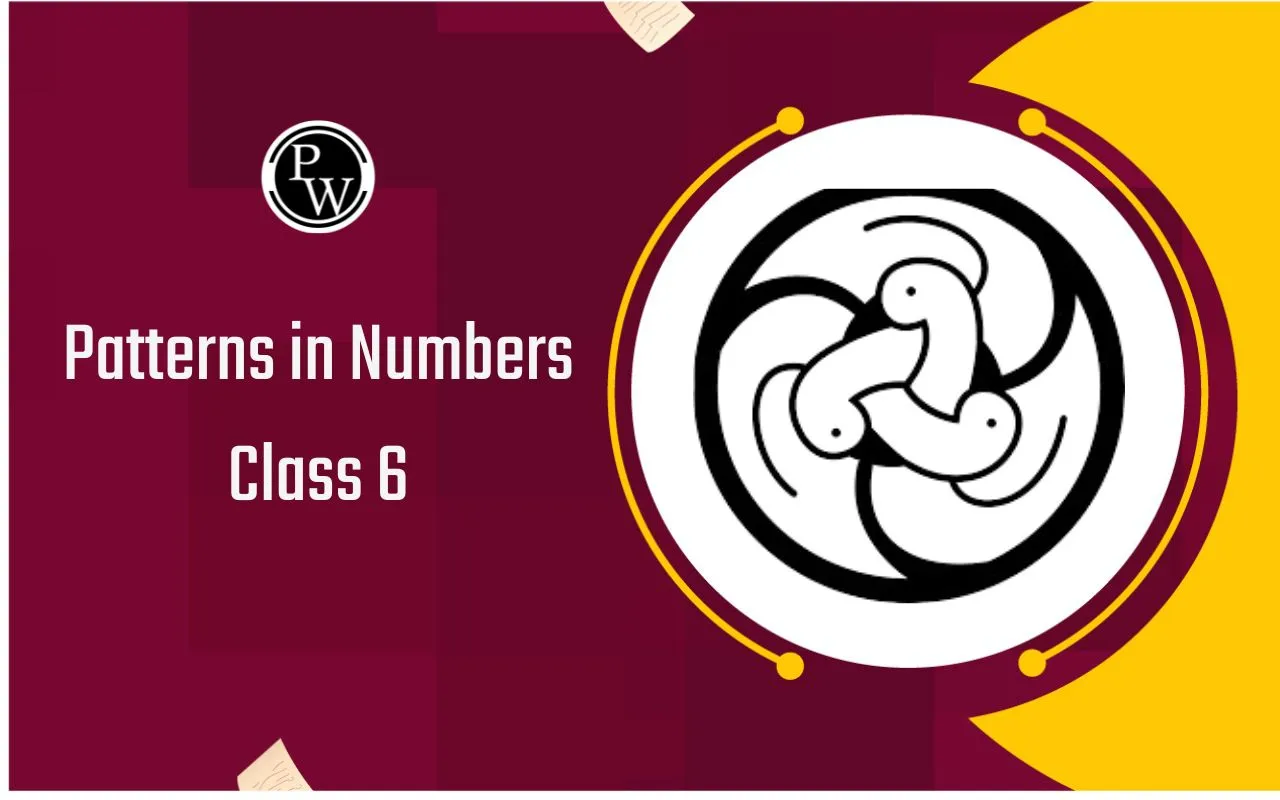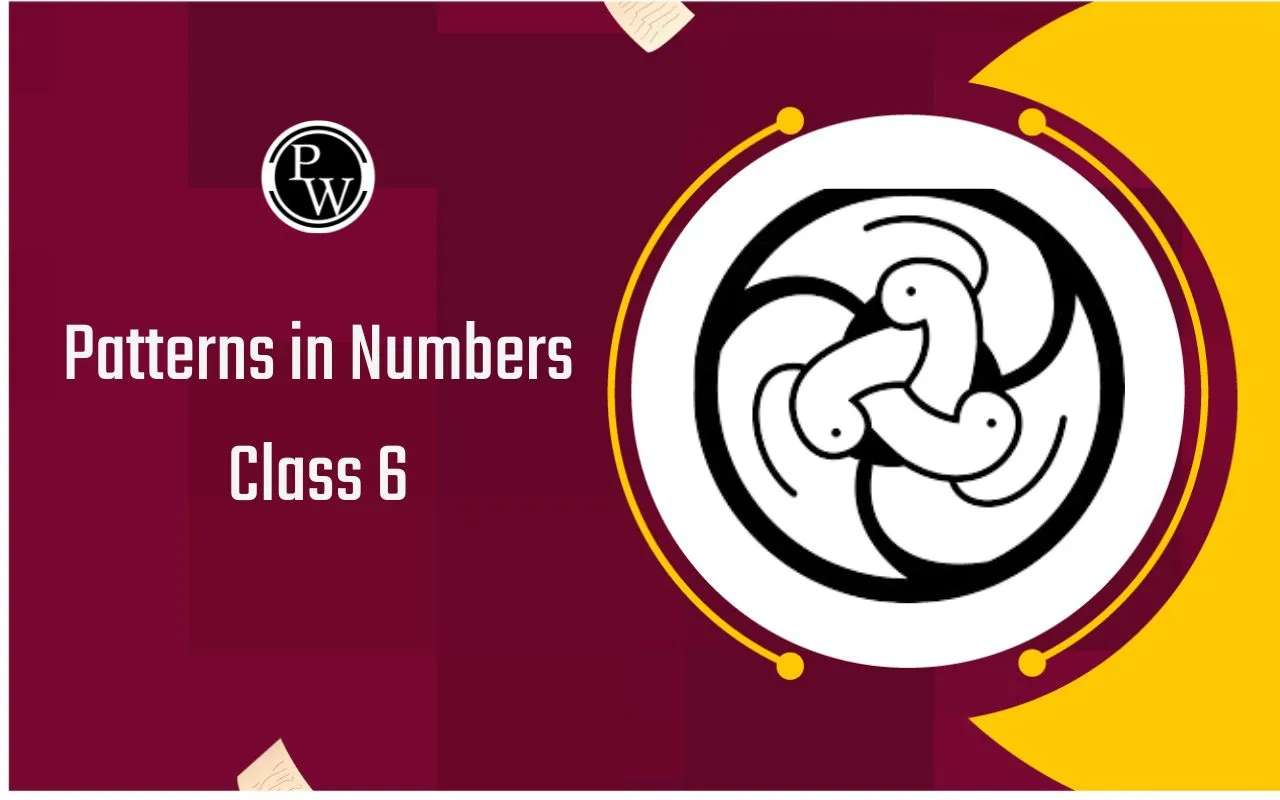
Patterns in Numbers class 6: Patterns in numbers are special arrangements of numbers that follow a rule. They help students understand sequences and solve problems quickly. The most common types of number patterns in class 6th are arithmetic patterns (involving addition or subtraction), geometric patterns (involving multiplication or division), and Fibonacci patterns (involving the sum of the previous two terms).
Apart from these, we also see patterns in even numbers, odd numbers, squares, cubes, and triangular numbers. Learning number patterns improves logical thinking, speed, and problem-solving skills. For Class 6 students, practicing patterns makes mathematics more engaging and builds a strong foundation for advanced topics such as algebra and geometry.
What Are Patterns in Numbers?
A number pattern is a list of numbers that follow a certain order or rule. The number patterns can be of different types, each following a different set of rules. Students need to find the rule given in the questions to solve them. Number patterns are fun and are the basis of mathematics for students.
For example:
-
2, 4, 6, 8, 10… (add 2 each time)
-
100, 90, 80, 70… (subtract 10 each time)
Class 6 Maths Patterns in Mathematics
Number Theory Class 6
Number theory is a branch of mathematics that focuses on the study of numbers and their properties. In Class 6, students learn the basics such as factors, multiples, prime and composite numbers, even and odd numbers, and divisibility rules.
These topics help students understand how numbers work and how they relate to each other. Learning number theory increases problem-solving skills and prepares students for advanced topics like algebra, geometry, and higher arithmetic. It is the basis of mathematics for kids.
Types of Number Patterns
Number patterns can be formed in many ways, such as by adding, subtracting, multiplying, dividing, or following special rules like the Fibonacci sequence. Each type of number has its own rule that makes the sequence continue logically. Check below to learn about the different types of Number sequences class 6 with examples.
Arithmetic Pattern (Subtraction and Addition)
An arithmetic pattern is formed when numbers increase or decrease by the same number.
-
Example: 5, 10, 15, 20, 25… (add 5 each time).
Rule for the pattern: Add or subtract the same value to get the next number.
Geometric Pattern
In a geometric pattern, each term is obtained by multiplying or dividing the previous term.
-
Example: 2, 4, 8, 16, 32… (multiply by 2).
Rule for the pattern: Multiply or divide by the same number each time.
Fibonacci Pattern (Sum of 2 Preceding Numbers)
The Fibonacci pattern is made by adding the two previous numbers to get the next one. Check the example below. Also, for a better understanding of these types of patterns, practice different questions.
-
Example: 0, 1, 1, 2, 3, 5, 8, 13…
Common Number Patterns for Class 6
Number patterns are everywhere in mathematics, and Class 6 students often come across common ones like even numbers, odd numbers, square numbers, cube numbers, and triangular numbers. These simple patterns make it easier to understand sequences and rules. Check below to explore the most common number patterns with examples.
-
Even numbers: 2, 4, 6, 8, 10…
-
Odd numbers: 1, 3, 5, 7, 9…
-
Square numbers: 1, 4, 9, 16, 25…
-
Triangular numbers: 1, 3, 6, 10, 15…
Rules for Patterns in Numbers
To continue a sequence of numbers, we must find the hidden rule to solve them. Some rules are:
-
Addition Rule – Add the same number (Example: +3, +3, +3).
-
Subtraction Rule – Subtract the same number.
-
Multiplication Rule – Multiply by the same number.
-
Division Rule – Divide by the same number.
-
Special Rules – Use squares, cubes, or Fibonacci addition.
Importance of Learning Number Patterns
Learning number patterns is very important for Class 6 students as it builds logical thinking and improves problem-solving speed. Patterns are also useful in higher mathematics, daily life, and even in nature. They make learning more fun and interactive. Check below to know why number patterns are important.
-
Helps in problem-solving and logical thinking.
-
Builds a strong base for algebra and geometry.
-
Improves speed in calculations.
-
Makes mathematics more interesting.
Examples of Number Pattern Questions
To understand patterns better, students should practice different types of problems based on sequences. These include arithmetic, geometric, Fibonacci, and special number patterns. Such exercises improve observation and reasoning skills. Check below for solved examples that show how to find missing terms and continue the sequence easily.
Example 1:
2, 4, 6, 8, __, __
-
Rule: Add 2.
-
Answer: 10, 12
Example 2:
3, 9, 27, __, __
-
Rule: Multiply by 3.
-
Answer: 81, 24
Example 3 (Fibonacci):
0, 1, 1, 2, 3, __, __
-
Rule: Add the previous two numbers.
-
Answer: 5, 8
Patterns in Numbers class 6 Full Vedio
Practice Questions for Students
To help Class 6 students strengthen their understanding of number patterns, we have included some practice questions. These cover arithmetic, geometric, Fibonacci, and special sequences like squares and odds. Solving them will improve problem-solving skills and confidence. Below, we have provided these practice questions for revision and practice.
-
Continue the sequence: 7, 14, 21, 28, __, __, __
-
Find the next numbers: 1, 2, 4, 8, 16, __, __
-
Fill in the blanks: 2, 4, 8, 16, __, __
-
Write the first six odd numbers.
-
Write the first six square numbers.

